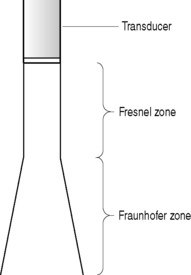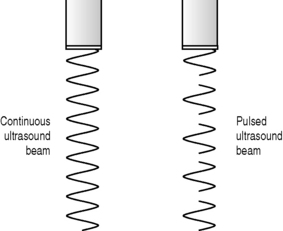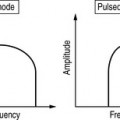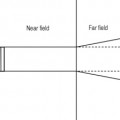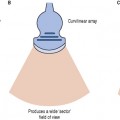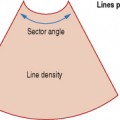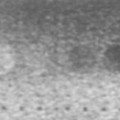Chapter 5 The ultrasound beam
BEAM SHAPE
The area through which the sound energy emitted from the ultrasound transducer travels is known as the ultrasound beam. The beam is three-dimensional and is symmetrical around its central axis. It can be subdivided into two regions: a near field (or Fresnel zone) which is cylindrical in shape, and a far field (or Fraunhofer zone) where it diverges and becomes cone-shaped (see Fig. 5.1).
Where there is continuous sound output from a transducer (primarily Doppler applications), there will be sound energy present throughout the beam for the duration of the scanning period. Most diagnostic applications, however, use pulsed sound, where the output is a series of short pulses of sound. In this case sound energy is not present throughout the beam, but only in small areas or pockets. It is the movement of these pockets of sound which we refer to as the ultrasound beam (see Fig. 5.2).
INTENSITY OF THE BEAM
The intensity of the beam is the power (measured in watts) flowing through a unit area (see Chapter 12 on Ultrasound safety). The intensity is not uniform throughout the beam’s length nor across its width. This is caused by a number of variable factors such as:
Stay updated, free articles. Join our Telegram channel

Full access? Get Clinical Tree


